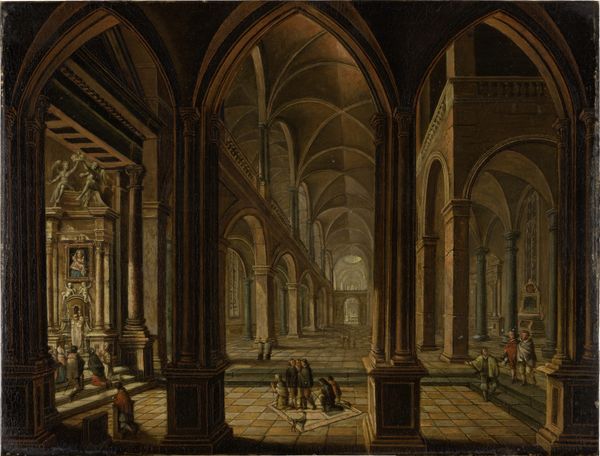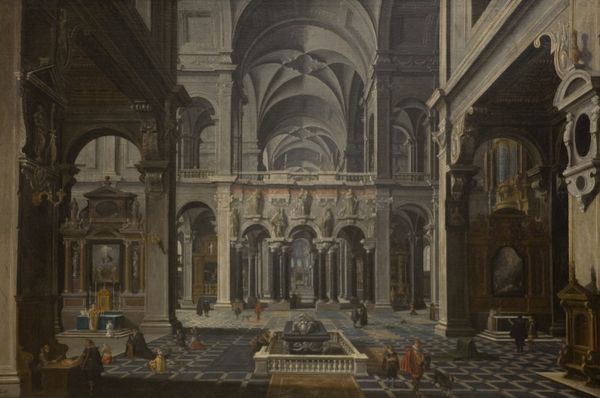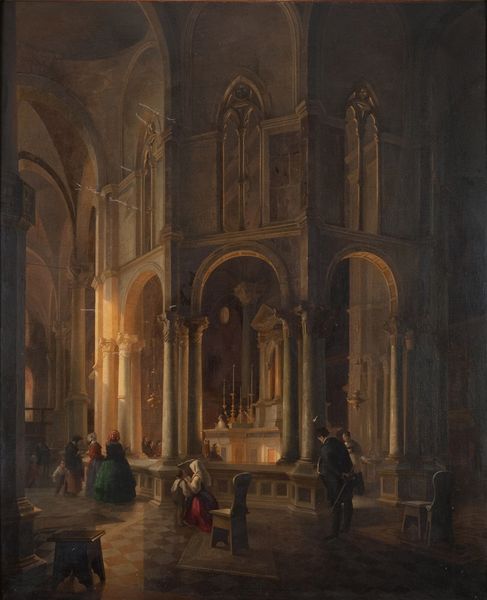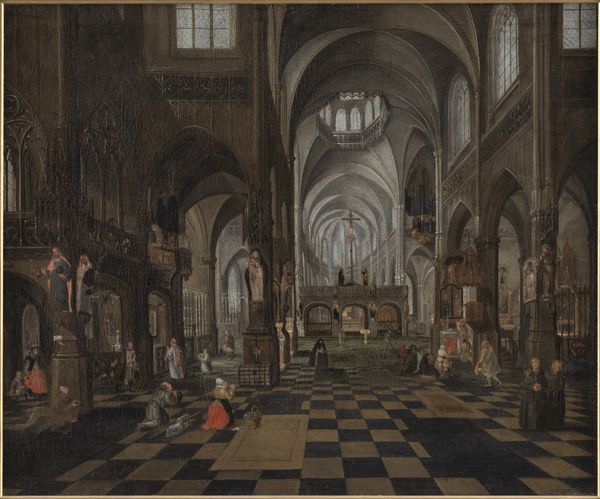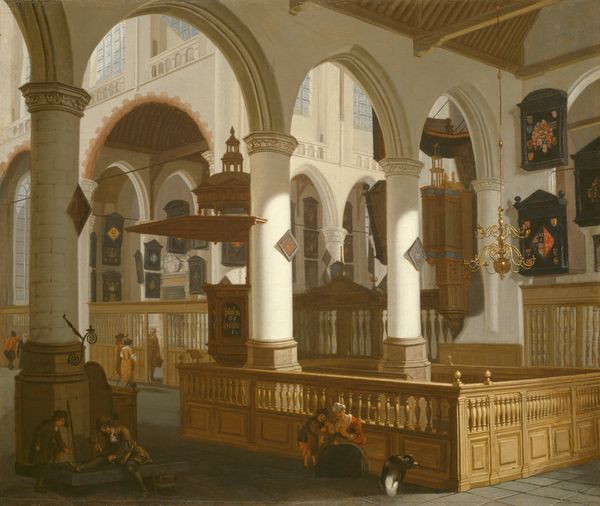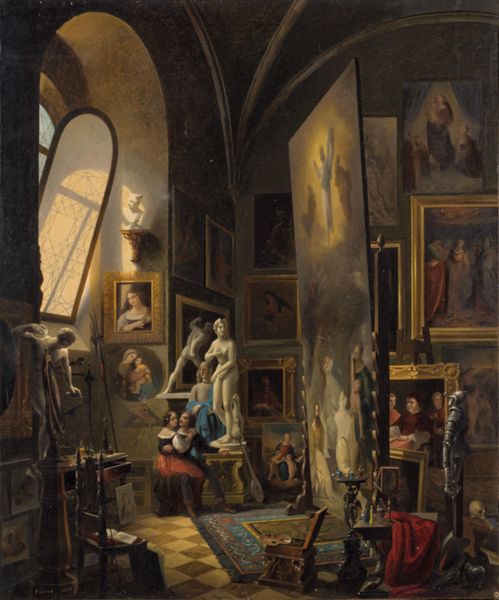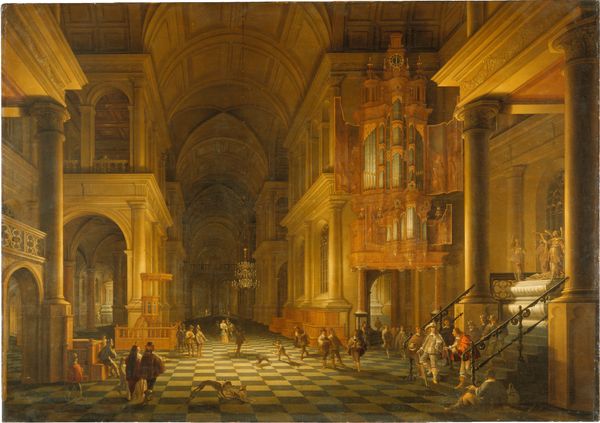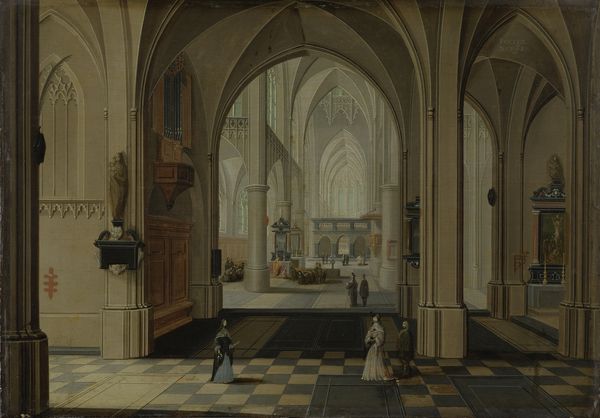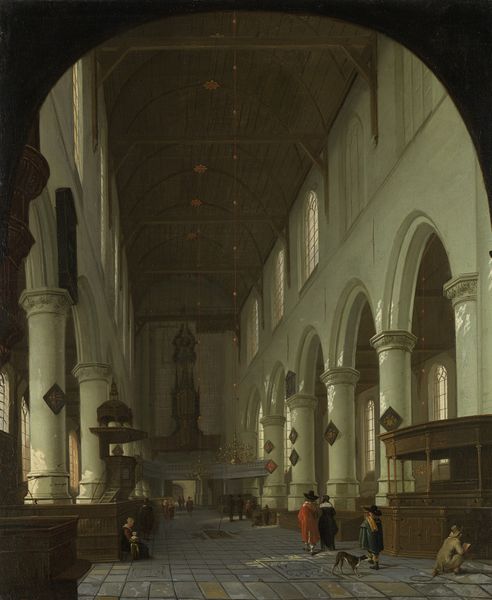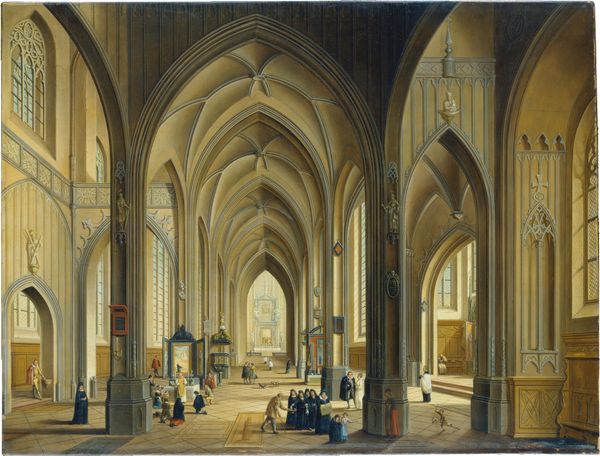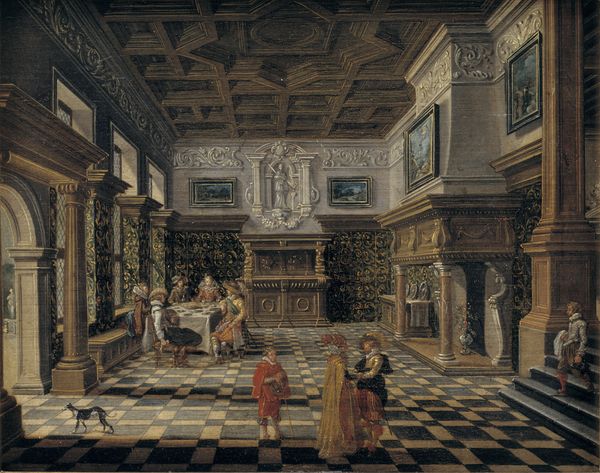
painting, oil-paint
#
painting
#
oil-paint
#
figuration
#
history-painting
#
italian-renaissance
#
watercolor
#
historical building
Dimensions: 58 x 45.5 cm
Copyright: Public domain
Curator: This artwork, entitled "Interior of a Cathedral," is an oil painting by Vincenzo Abbati. Its location is currently listed as a Private Collection. It’s a particularly evocative piece. Editor: Evocative, yes. It immediately struck me with its stillness. The muted light seems to absorb sound. The prone figure really draws the eye, though—there's something intensely dramatic about this scene. Curator: Precisely. Abbati, while working with oil on canvas, captured a very specific and intricate scene. Look at the vaulted ceilings, the detailing on the walls, and even the specific religious artifacts near the altar. How do you think the space contributes to the narrative he creates here? Editor: Well, the cathedral setting inherently infuses the scene with religious and historical weight, doesn't it? But also power, especially seeing someone kneeling and what appears to be a fallen body. It subtly speaks to hierarchies of power, perhaps of faith over body or even the social standing implied in the treatment of that figure. There are real stories being told in the treatment of identity. Curator: Interesting. The architecture of the church itself isn't merely a backdrop; it dictates the physical and arguably the spiritual structure in which labor, devotion, and loss occur. The light falling across surfaces reveals material substance, draws out surface qualities. I also can't help but look at how labor-intensive it would be to construct and adorn it and thus, memorialize such power. Editor: Right, think about what kind of society could have supported that level of artisanal production, while also managing complex relationships of state. We need to acknowledge both how this building symbolizes the period, and what implications that architecture had for the individual. We can’t deny these dynamics when we evaluate its contents. Curator: I agree, seeing these materials through this work helps better inform the stories. It adds a crucial layer of socio-political awareness to our art-historical insights, providing the vital context necessary for deep understanding of Abbati's composition. Editor: And acknowledging those contextual implications allows for a modern reading, making art less a document and more an interlocutor in wider global conversations, hopefully toward a deeper cultural understanding. Curator: I agree entirely. Thank you. Editor: Thank you.
Comments
No comments
Be the first to comment and join the conversation on the ultimate creative platform.
